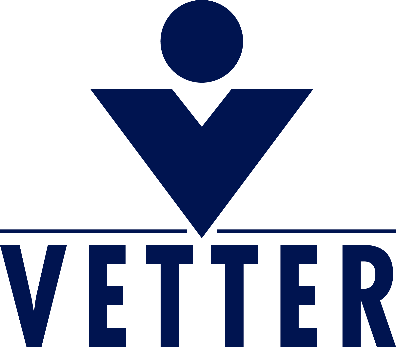The growing practice of using lyophilisation to stabilise drugs has enabled entry into markets in far flung places. Mike Schäfers, West Pharmaceutical Services, Inc, and Thomas Otto, Vetter, explain how a further innovation fills a need in simplifying the reconstitution process
Lyophilisation – the process of freeze-drying drugs such as vaccines and other injectables by removing water from the material and sealing the material in a vial – has made it easier and faster for many new drugs to reach the market. Lyophilised products require an additional preparation step prior to administration. This process, known as reconstitution, entails mixing the dry drug with a liquid to create an injectable solution.
Traditional reconstitution requires two vials – one of the lyophilised drug and one of a diluent such as water for injection – a disposable syringe and two needles. It also requires experience and training, and has the potential to put the person administering the drug at risk of an accidental needle-stick injury. Further, the patient may be at risk of an under- or over-dose because the diluent may not be measured precisely.
The use of a sterile, prefilled, water for injection syringe has the potential to revolutionise the reconstitution process, enabling pharmaceutical companies to include a precise dose of diluent to accompany its drug product, thus making the product safer for the end-user. In addition, a prefilled syringe used in conjunction with a reconstitution system, such as a vial adapter, removes at least one needle from the reconstitution process. This helps to prevent needle-stick injuries and aids in administration safety.
innovation partnership
Historically, the market has lacked sterile prefilled water for injection syringes. Although a small number of manufacturers currently provide water for injection services, there is an overall scarcity of product offerings on the market.
In 2008, seeing the need for a high-quality sterile water for injection prefilled syringe, component manufacturer West Pharmaceutical Services joined forces with Vetter, an independent provider of aseptically prefilled syringes, cartridges and vials, to create a commercially available, high-quality sterile water for injection syringe. The syringe is aseptically manufactured with components that meet US, European and Japanese Pharmacopoeia requirements.
The two companies spent two years developing and testing the syringe system, which is produced at Vetter. The components include a West plunger with FluroTec barrier film to enhance lubricity and reduce the risk of contamination, and a V-OVS tamper-evident closure system with luer lock adapter and tip cap manufactured with West’s 4023/50 gray formulation. Each component is also supplied with B2-Coating, which helps with particulate reduction.
A unique feature of the sterile water for injection syringe is that it allows a variety of fill volumes. Customers can select fill volumes ranging from 0.50ml to 3.0ml presented in either a 1.5ml or 3ml syringe, depending on the fill volume.
For pharmaceutical companies, this means they now have the ability to offer lyophilised drugs with a syringe filled with the precise quantity of diluent needed for proper administration. Since many other lyophilised products have only one fill volume size, the flexibility to provide a prefilled syringe with a diluent in the appropriate volume can help differentiate the drug product in the market, enhance end-user safety and substantially reduce time-to-market.
The regulatory documents for the sterile water for injection syringe have been compiled in accordance with the current FDA and EMA requirements (Common Technical Documents format) and are available ‘off the shelf’. A Type II drug master file has been submitted to the FDA. This enables a fast time-to-market for the customer.
product advantages The prefilled sterile water for injection syringe offers companies a variety of additional benefits, including:
- Extended shelf-life (4-year target)
- Tamper-evidence function
- Premium quality packaging components.
When combined with reconstitution systems already on the market, pharmaceutical companies can provide a total package solution to the end-user.
A system might include the drug product, the sterile water for injection syringe and a vial adapter. A vial adapter can connect the water for injection syringe to a vial with a lyophilised or dry powder drug and provide for quick and safe transfer from vials, allowing convenient, optimal quantity aspiration.





